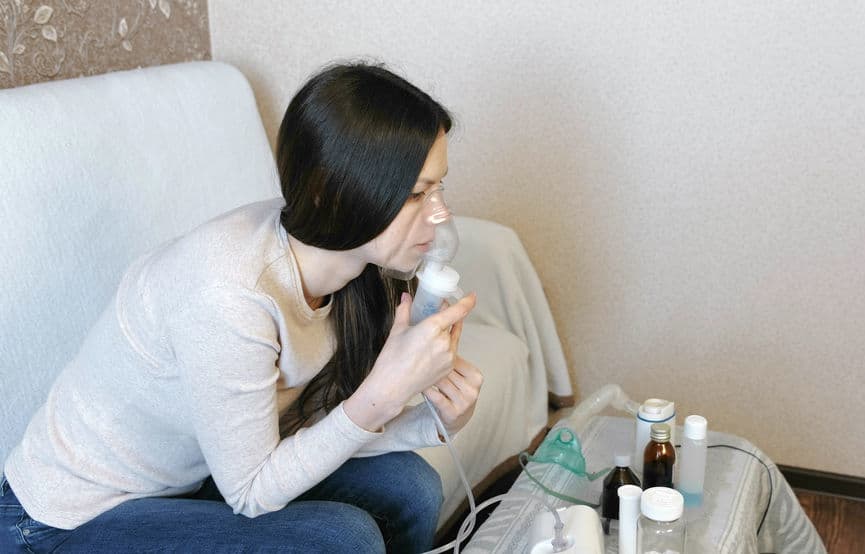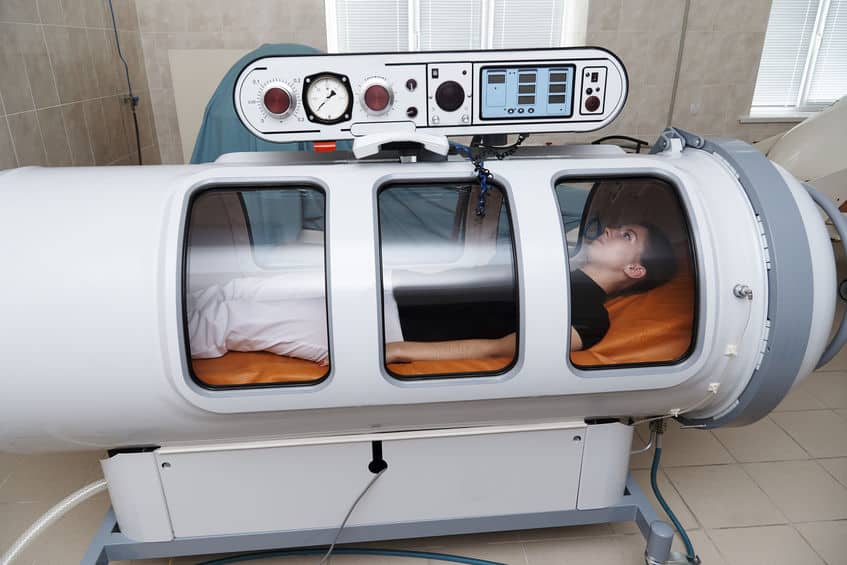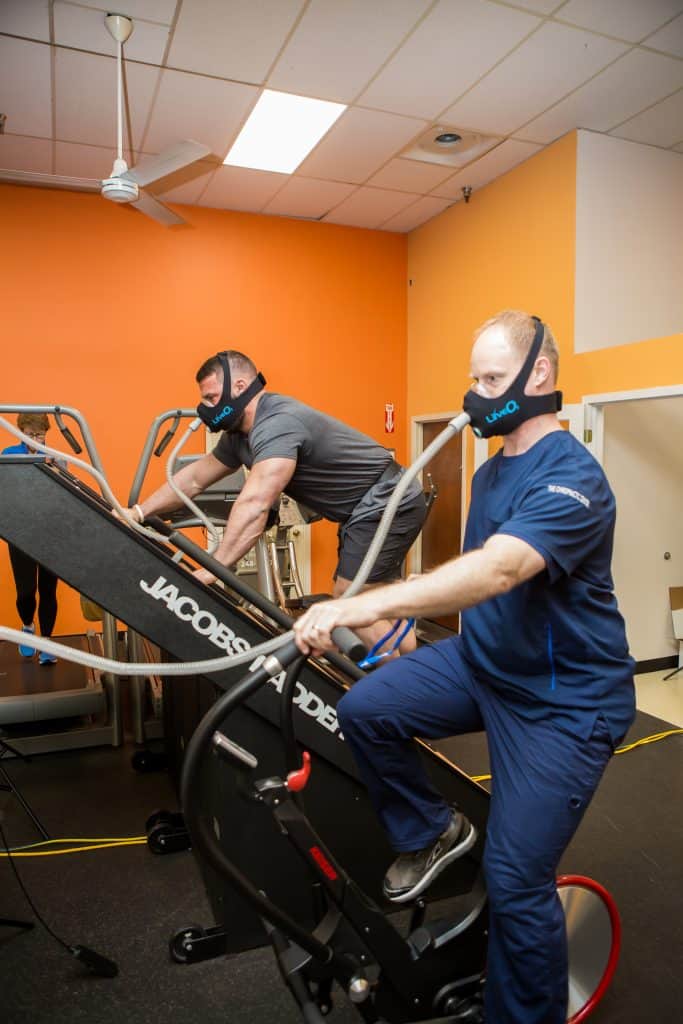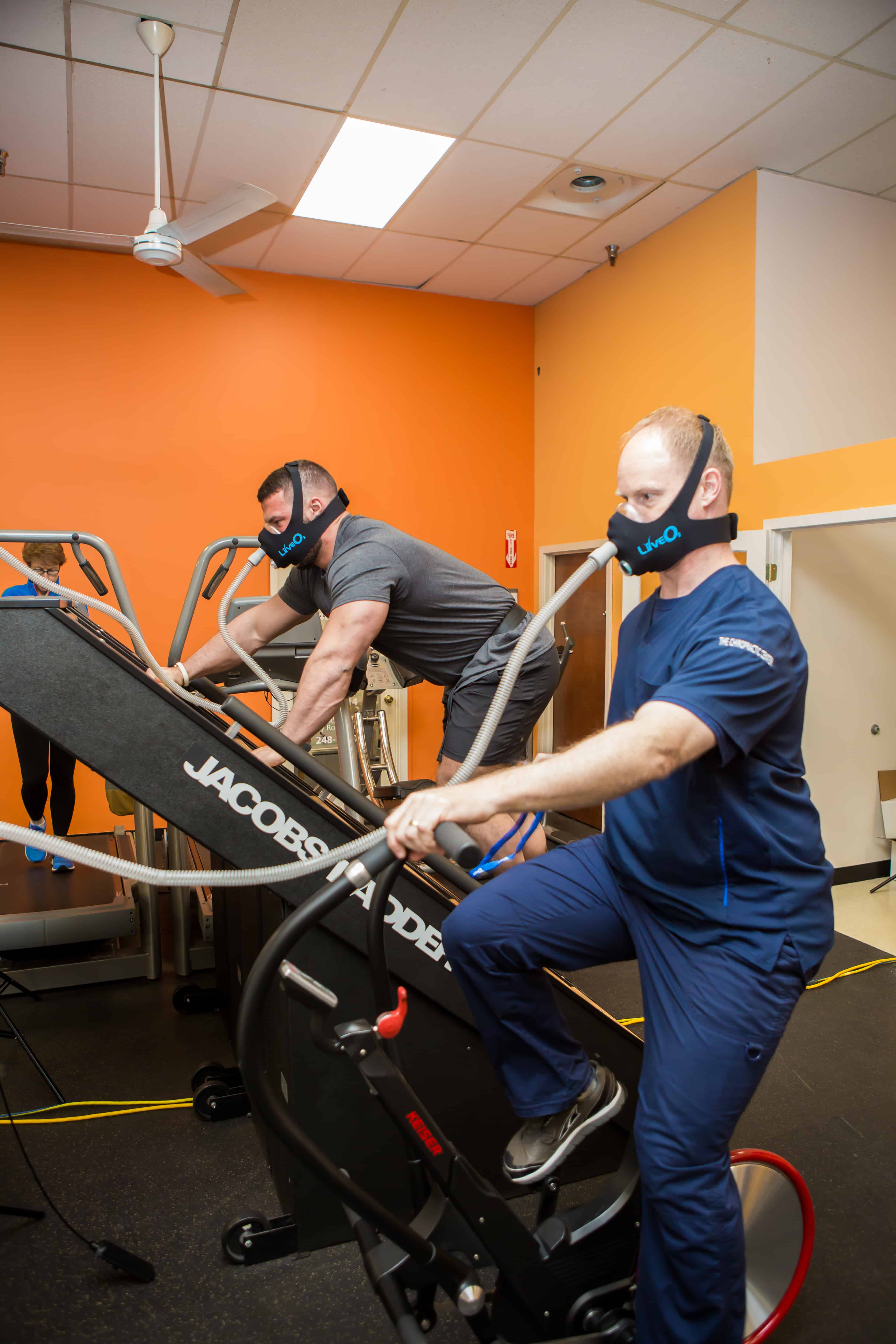Don’t worry – it’s easy to tell the difference between Oxygen Training and oxygen therapy.
Oxygen therapy is intended to support people with medical issues. It is used for people who are unable or unwilling to exercise during oxygen administration. Administration of the oxygen is intended to support or treat a specific medical condition.
The medical issue that invites treatment normally prevents this person from exertion or exercise during oxygen administration. This image shows person is sitting and breathing – not exerting, who is presumably unable or unwilling to exert.
A hyperbaric chamber is another example of Oxygen Therapy.
The person resting in a single-person hyperbaric chamber. Hyperbaric therapy is medically acknowledged for 14 medical conditions. Hyperbaric chambers are normally used with the intent to treat a specific medical condition.


The mechanism of action is external pressure. Pressure diffuses or soaks oxygen into the person’s body proportional to the pressure created by the chamber. The effect is transient because when the pressure releases, extra oxygen is utilized or diffuses out of the body.
The mechanism of action is passive – no activity by the user is required. The person cannot exercise in the hyperbaric because there isn’t room inside most chambers.
There are three risk factors:
Oxygen Training uses a combination of oxygen mixtures to increase the natural physiological effects of exercise.
The effects of training are a result of the combination of exertion and switchable oxygen mixture. The exertion increases the natural processes that transport oxygen from the lungs to the tissue to increase the amount of oxygen in the tissue. The results are the product of the physiological activation from the exercise and the amount of oxygen delivered to the tissue.
The masks enable the user to control what they breathe as they exercise.
There is no chance of CO2 / O2 imbalance because exertion increases CO2 and activates the vascular system to move oxygen from the lungs to the tissues.


LiveO2 enhances the intensity of respiratory process with Adaptive Contrast.
Adaptive Contrast enables users to switch between oxygen rich and oxygen reduced air. Oxygen reduced air is a simulated altitude that compels the cardiovascular system to work harder. Oxygen enriched air expedites recovery.
Switching from maximal exertion with oxygen reduced air to oxygen enriched creates a magic moment of simultaneous maximums of blood flow and blood oxygen concentration to create higher oxygen levels than are known possible by any other known means.
-O2 delivers about the same as the oxygen level cabin pressure of a commercial airline.
+O2 delivers about 4x more oxygen than in normal air.
LiveO2 with Adaptive Contrast enables a user to switch between -O2 and +O2 during exercise
Don’t worry – it’s easy to tell the difference between Oxygen Training and oxygen therapy.
Oxygen therapy is intended to support people with medical issues. It is used for people who are unable or unwilling to exercise during oxygen administration. Administration of the oxygen is intended to support or treat a specific medical condition.
The medical issue that invites treatment normally prevents this person from exertion or exercise during oxygen administration. This image shows person is sitting and breathing – not exerting, who is presumably unable or unwilling to exert.

Use nebulizer and inhaler for the treatment. Young woman inhaling through inhaler mask looks at a vial of pills. Side view
A hyperbaric chamber is another example of Oxygen Therapy.
The person resting in a single-person hyperbaric chamber. Hyperbaric therapy is medically acknowledged for 14 medical conditions. Hyperbaric chambers are normally used with the intent to treat a specific medical condition.
The mechanism of action is external pressure. Pressure diffuses or soaks oxygen into the person’s body proportional to the pressure created by the chamber. The effect is transient because when the pressure releases, extra oxygen is utilized or diffuses out of the body.
The mechanism of action is passive – no activity by the user is required. The person cannot exercise in the hyperbaric because there isn’t room inside most chambers.
There are three risk factors:
Get Help
 [ctaa_our_staff]
[ctaa_our_staff] 
A pressure chamber is a device that saturates the body with a significant amount of oxygen. Hyperbaric oxygenation.
Oxygen Training uses a combination of oxygen mixtures to increase the natural physiological effects of exercise.
The effects of training are a result of the combination of exertion and switchable oxygen mixture. The exertion increases the natural processes that transport oxygen from the lungs to the tissue to increase the amount of oxygen in the tissue. The results are the product of the physiological activation from the exercise and the amount of oxygen delivered to the tissue.
The masks enable the user to control what they breathe as they exercise.
There is no chance of CO2 / O2 imbalance because exertion increases CO2 and activates the vascular system to move oxygen from the lungs to the tissues.

LiveO2 enhances the intensity of respiratory process with Adaptive Contrast.
Adaptive Contrast enables users to switch between oxygen rich and oxygen reduced air. Oxygen reduced air is a simulated altitude that compels the cardiovascular system to work harder. Oxygen enriched air expedites recovery.
Switching from maximal exertion with oxygen reduced air to oxygen enriched creates a magic moment of simultaneous maximums of blood flow and blood oxygen concentration to create higher oxygen levels than are known possible by any other known means.
LiveO2 is an oxygen training system – it absolutely requires some sort of exertion during use, and is only intended for use to optimize health. It is not intended to be used absent exercise or exertion; or to treat, prevent or cure any disease or health condition.
